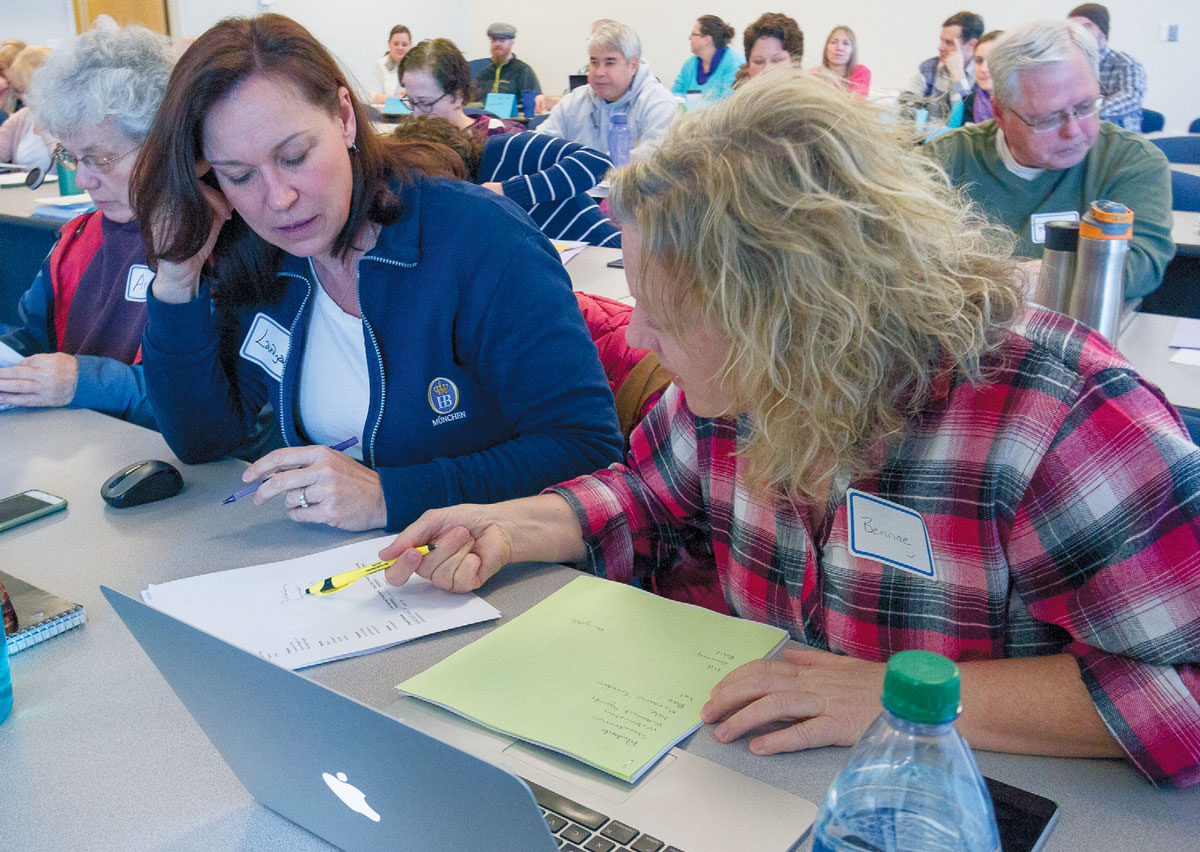Cultivating Success: Mentoring New Farmers for the Future
You see them at the local farmers markets: young farmers and ranchers, proudly displaying and selling what they grew or raised through hard labor and determination. They know breaking into the profession is no small feat.
Many challenges await those who choose farming or ranching as a career. They include access to land, capital and knowledge. According to the USDA, the average age of farmers and ranchers in the United States is approaching 60 years old. Because of this, local communities everywhere need new, younger farmers to replace those who will retire.
David Mitchell is an aspiring farmer. He grew up in Melba and absorbed how a friend’s family ran their farm. He noticed how they fed their chickens, irrigated their crops and managed their business. He also saw that they weren’t too wealthy, but what they did have was freedom and the time to spend with their family.
That stuck with Mitchell. After bouncing around in different careers including music, a small beef co-op and banking, Mitchell made the leap from Wells Fargo to work at Ohana No-Till Farm in Meridian.
Almost three years later, Mitchell left Ohana to focus on his own ventures: Pigs in Space and moringa tree farming. Pigs in Space is a pasture-raised pig farm in Homedale. The land comes from business partner Jim West. Its operations are based on the holistic and sustainable model popularized by Joel Salatin of Polyface Farms. A key element is using portable electric fences to rotate grazing livestock.
With limited finances, land and labor, Mitchell and West plan to keep the scale manageable, working no more than 50 pigs at a time. Starting this spring, they hope to sell directly to customers by offering memberships/shares for their pork.
If all goes well with Pigs in Space, Mitchell and his wife, Jill, plan to start a moringa tree farm. Moringas are high in protein. Although grown in tropical regions, they hope to adapt the trees to Idaho’s climate. They’ll start by growing them in greenhouses to see if, over time, these trees can thrive.
Mitchell has a pragmatic view of what it takes to be a successful farmer. “You are either born into it or you go into debt,” he said.
Mitchell is keeping debt at bay by maintaining a full-time job. His wife also works part time. They plan to keep these jobs while farming to ensure a stable income.
The Mitchells have the land and capital to sustain their fledgling operation. For knowledge and mentors, new farmers and ranchers can turn to the University of Idaho Extension. In coordination with Rural Roots, a nonprofit food and farming organization based in Moscow, the Extension recently offered sustainable small farm education courses across Idaho as part of a program called Cultivating Success. These courses help with farm planning and assessment, which enables aspiring farmers to evaluate and ensure they are going forward in a smart way.
“The majority of people coming into this program do not have direct experience in agriculture,” said Ariel Agenbroad, extension educator in Ada County. “Experienced small farmers are involved at every step of the way. Small farmers need to learn from each other.”
Agenbroad explained that the program’s mentorship is vital. As a formal partnership between experienced farmers and beginning farmers, the mentorship component is a way to tap into the existing knowledge of current, successful farmers and to create bonds that help ensure the long-term success of new farmers.
“We need resiliency in our local food system,” said Agenbroad. “This program helps facilitate the development of a community of small farmers. That networking piece is key to their success, which includes collaborations and sharing of ideas and resources.”
A recent three-year USDA grant made it possible for the Extension to offer these courses. The 2014 Farm Bill reauthorized the Beginning Farmer and Rancher Development Program with $100 million for new farmer training programs, such as Cultivating Success. But compared with other agricultural-related items in the bill, support for beginning farmers and ranchers is a small drop in the bucket. For example, crop insurance allocation is $89.8 billion.
When asked about the legislation, Mitchell replied, “I’m not against the Farm Bill. Its job is to stimulate the economy. However, the Farm Bill needs to put more support into farmer education.”
As essential as new small farmers and ranchers are to our local food system, it’s easy to forget the many challenges they face to produce the food we place on our tables. But many succeed through a combination of factors like resiliency, innovation, financial acumen, hard work, community and networking.






